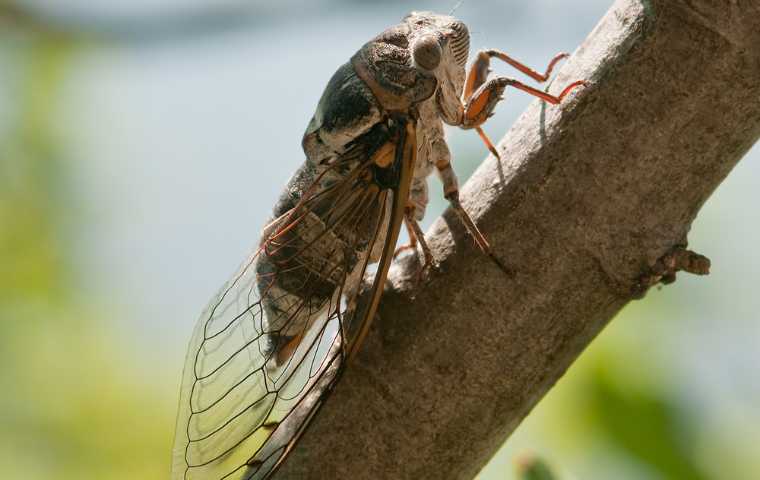What Do Cicadas Eat?
Introduction
Cicadas are fascinating insects known for their loud, distinctive calls and their periodic emergence from the ground. But what do these creatures eat? This comprehensive article will delve into the diet of cicadas, exploring their feeding habits, the types of plants they favor, and the ecological significance of their feeding patterns.
Cicada Diet: An Overview
Cicadas are primarily herbivores, feeding on the sap of various plants. They have a unique feeding mechanism involving a specialized mouthpart called a proboscis, which they use to pierce plant tissues and extract nutrients. Here are some key points about cicada diet:
- Plant Sap: Cicadas feed on the sap of plants, which is rich in sugars and nutrients. They use their proboscis to pierce the plant tissues and suck out the sap.
- Leafy Vegetation: Cicadas prefer to feed on leafy vegetation, such as leaves, stems, and shoots. They are particularly fond of young, tender growth.
- Tree Species: Cicadas have a preference for certain tree species, such as oaks, maples, and elms. They are attracted to the sap-rich tissues of these trees.
- Seasonal Feeding: Cicadas have a specific feeding period, typically during the summer months when their populations are at their peak. This period allows them to gather sufficient energy to complete their life cycle.
Types of Plants Cicadas Feed On
Cicadas have a diverse diet that includes a wide range of plant species. Here are some examples of the types of plants they feed on:
| Plant Species | Common Name | Cicada Preference |
|---|---|---|
| Quercus spp. | Oak | High preference |
| Acer spp. | Maple | High preference |
| Ulmus spp. | Elm | High preference |
| Populus spp. | Poplar | Moderate preference |
| Salix spp. | Willow | Moderate preference |
| Fraxinus spp. | Ash | Moderate preference |
| Prunus spp. | Cherry | Low preference |
| Malus spp. | Apple | Low preference |
| Betula spp. | Birch | Low preference |
Feeding Habits and Mechanism
Cicadas have a unique feeding mechanism that involves their proboscis. Here are some details about their feeding habits:
- Proboscis: The proboscis is a specialized mouthpart that cicadas use to pierce plant tissues and extract sap. It is long and slender, allowing them to reach deep into plant tissues.
- Feeding Process: Cicadas use their proboscis to pierce the plant tissues, creating a channel through which they can suck out the sap. This process is facilitated by the cicada’s strong sucking muscles.
- Sap Extraction: Cicadas extract sap from plants, which provides them with essential nutrients and energy. The sap is rich in sugars, amino acids, and other nutrients that support the cicada’s growth and development.
Ecological Significance of Cicada Feeding
Cicadas play a significant role in their ecosystems, influencing plant growth and the distribution of nutrients. Here are some ecological implications of cicada feeding:
- Plant Growth: Cicadas can influence plant growth by removing sap from plants. This can lead to changes in plant morphology, such as altered leaf shape or reduced growth rates.
- Nutrient Cycling: Cicadas help in the cycling of nutrients by extracting sap from plants. The nutrients they consume are then returned to the soil through their excrement, which can benefit other plants and organisms.
- Predator-Prey Dynamics: Cicadas are preyed upon by various predators, including birds, mammals, and other insects. Their feeding patterns and population dynamics can influence the behavior and population sizes of these predators.
Conclusion
Cicadas are fascinating insects with a unique diet that plays a significant role in their ecosystems. Their feeding habits and preferences are crucial for understanding their ecological interactions and the dynamics of the environments they inhabit. By exploring the diet of cicadas, we gain a deeper appreciation for the intricate relationships that exist between insects and their environments.
Frequently Asked Questions (FAQs)
- What do cicadas eat?
- Cicadas are primarily herbivores that feed on the sap of various plants, particularly leafy vegetation and the sap-rich tissues of certain tree species.
- How do cicadas feed?
- Cicadas use their specialized mouthpart, the proboscis, to pierce plant tissues and extract sap. They have strong sucking muscles that facilitate this process.
- What types of plants do cicadas feed on?
- Cicadas prefer to feed on plants like oaks, maples, and elms, but they can also feed on other tree species and some shrubs.
- Why do cicadas feed on certain plants?
- Cicadas are attracted to the sap-rich tissues of certain plants, which provide them with essential nutrients and energy.
- How do cicadas influence their ecosystems?
- Cicadas can influence plant growth and nutrient cycling in their ecosystems. They also play a role in predator-prey dynamics, as they are preyed upon by various predators.
- What is the ecological significance of cicada feeding?
- Cicada feeding can lead to changes in plant morphology and nutrient cycling. It also influences the behavior and population sizes of predators.
- Are cicadas beneficial to their ecosystems?
- Yes, cicadas play a significant role in their ecosystems, influencing plant growth, nutrient cycling, and predator-prey dynamics.
- How do cicadas affect the plants they feed on?
- Cicadas can affect plant growth by removing sap, which can lead to changes in plant morphology and reduced growth rates.
- What happens to the nutrients cicadas consume?
- The nutrients cicadas consume are returned to the soil through their excrement, which can benefit other plants and organisms.
- Are cicadas harmful to their ecosystems?
- No, cicadas are generally beneficial to their ecosystems, as they play a crucial role in nutrient cycling and predator-prey dynamics.
For more information on cicadas and their ecology, you can refer to the National Geographic website, which provides a comprehensive overview of these fascinating insects.
Table of Commonly Fed Plant Species
| Plant Species | Common Name | Cicada Preference |
|---|---|---|
| Quercus spp. | Oak | High preference |
| Acer spp. | Maple | High preference |
| Ulmus spp. | Elm | High preference |
| Populus spp. | Poplar | Moderate preference |
| Salix spp. | Willow | Moderate preference |
| Fraxinus spp. | Ash | Moderate preference |
| Prunus spp. | Cherry | Low preference |
| Malus spp. | Apple | Low preference |
| Betula spp. | Birch | Low preference |
This table provides an overview of the plant species that cicadas commonly feed on, along with their preference for each species.



